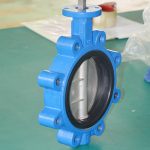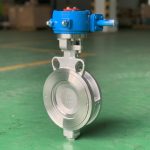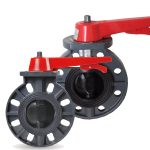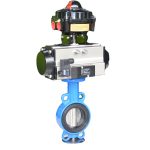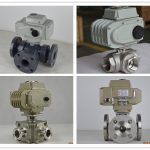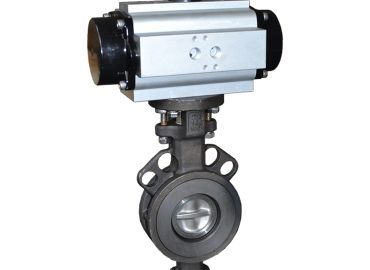A butterfly valve is often used in piping and plumbing systems to control the flow of liquids, gases, and other substances. Knowing how to calculate the torque setting on a butterfly valve is essential for getting the most efficient and effective results from your system. By understanding the factors that go into calculating this important setting, you can ensure your system runs smoothly and safely. In this blog post, we’ll take a look at why it’s important to get the perfect torque setting for your butterfly valves, as well as step-by-step instructions for how to do so.
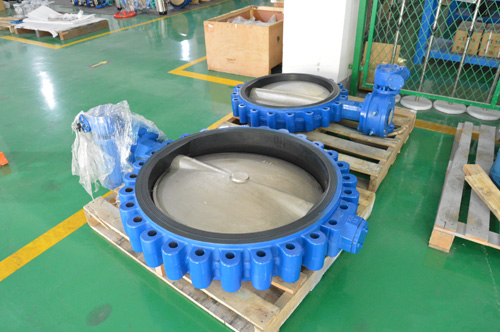
Understanding What Is a Butterfly Valve and Its Function
Wafer butterfly valve is a type of flow control device used in plumbing and piping systems. It consists of a circular disc with a stem or rod that fits through the disc. This allows for the disc to be rotated to either open or close the valve, controlling the flow of liquids, gases, and other substances through the system. This type of valve is widely used because they are easy to maintain, provide reliable control performance, and can handle higher pressure applications than other types of valves.
Butterfly valves are available in different materials such as cast iron, ductile iron, and stainless steel, depending on application requirements. Additionally, they come in various shapes and sizes to meet different flow needs. By understanding how a butterfly valve works and its function within different systems, users can make sure their system is operating at peak performance for maximum efficiency.
Important Factors to Consider When Calculating Torque
Calculating the torque for a butterfly valve is an essential step in ensuring accurate and efficient performance. There are several factors that should be taken into consideration when calculating the perfect torque setting, including the type of pipe material being used, the size of the valve, and pressure requirements. Additionally, it’s important to consider the outside environment and any other conditions that may affect torque calculation such as temperature or vibration levels.
Lastly, it’s also important to ensure that enough force is applied to create a proper seal between the valve and pipe threads, while avoiding any excessive force that could damage the system. By taking these factors into consideration when calculating butterfly valve torque settings, users can ensure their piping and plumbing systems are operating effectively and efficiently.
Type of butterfly valve and material used
Lug butterfly valve are available in different types and materials, each designed to meet specific application requirements. The most popular type of valve is the wafer valve which is connected between two flanges or pipes with a stem passing through the disc. These are available in light, medium and heavy-duty models depending on the type of material they will be working with. The most commonly used material for these valves is ductile iron, however stainless steel and cast iron are also viable options depending on the environment they will be operating in. By choosing the right type of butterfly valve and material for a particular application, users can ensure better performance and longevity from their system.
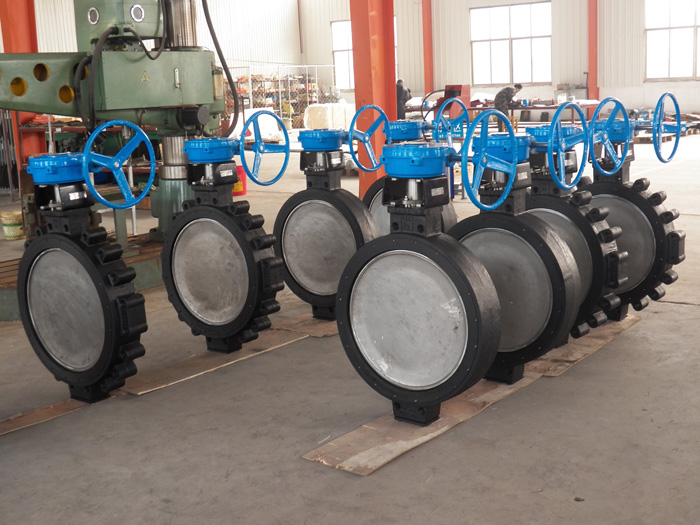
Size of the valve
The size of a butterfly valve is an important factor when selecting the right one for an application. This is because size determines the flow rate and pressure capabilities of the valve. In general, larger valves are more capable of handling higher pressures while smaller valves can be used in lower pressure applications. Additionally, it’s important to factor in the dimensions of the mounting space and any other piping connections that may be present in the system to ensure a proper fit and seal. By choosing the correct size of butterfly valve, users can ensure that their system operates correctly and efficiently.
Pressure of the system
The pressure rating of a flanged butterfly valve is one of the most important considerations when selecting one for an application. This is because the pressure rating indicates how much pressure the valve can withstand before failing, so it’s essential to choose a valve that is rated for the pressure present in the system. Pressure ratings are usually expressed in psi (pounds per square inch) or bar and can range from low-pressure valves up to high-pressure valves with ratings of several thousands pounds per square inch. Knowing the correct pressure rating of your systemis essential to choosing the right butterfly valve for your setup.
Step-By-Step Process for Calculating Butterfly Valve Torque
Calculating the torque of a butterfly valve is an important step in selecting the right valve for an application. This torque calculation takes into account multiple factors such as the size, pressure rating, and material of the valve. The first step is to identify the correct size of the valve; this should take into consideration both the dimensions of the mounting space and any other piping connections present in the system. Once you have established an appropriate size, you need to determine what pressure rating of valve is suitable for your application. Finally, you will need to factor in the type of material used to make up your butterfly valve.
Once all these factors have been taken into account, you can then calculate the necessary torque using a mathematical formula that combines all these elements together. With this information in hand, you can then be sure that you are selecting a butterfly valve with enough strength and durability to meet your specific requirements.
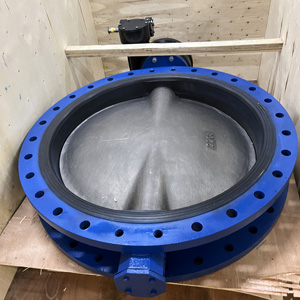
Tips for Achieving the Perfect Torque Setting
Achieving the perfect torque setting for a butterfly valve is essential in order to ensure optimal performance. To do so, it is important to take several factors into consideration beforehand. First of all, it is important to measure the pressure rating of the system; this should be done with the help of a pressure gauge or other pressure measuring device.
Additionally, you will need to factor in the material and size of the valve when determining the necessary torque setting. Lastly, once you have identified all these variables you can then begin calculating the exact torque required for your application. When tightening a butterfly valve manually, it can be helpful to use a thread lube or grease on the stems and threads for optimal lubrication and tightness. Additionally, many people opt for electric actuators which allow for more precise adjustments compared to manual tightening. By following these tips, you can ensure that your butterfly valves are properly torqued and optimized for efficient performance.
Conclusion
Calculating the perfect butterfly valve torque is a critical step in ensuring that your valve operates optimally and safely. By taking into account the factors such as pressure rating, size, material, and type of actuator used, you can make sure that you are selecting the correct torque for your application. Additionally, it is important to take care to correctly measure and tighten the valve manually or with electric actuators where appropriate. Following these tips will ensure that your butterfly valves are properly torqued and optimized for efficient performance. In conclusion, achieving the perfect torque setting for a butterfly valve requires careful attention and consideration but the results are well worth it!




